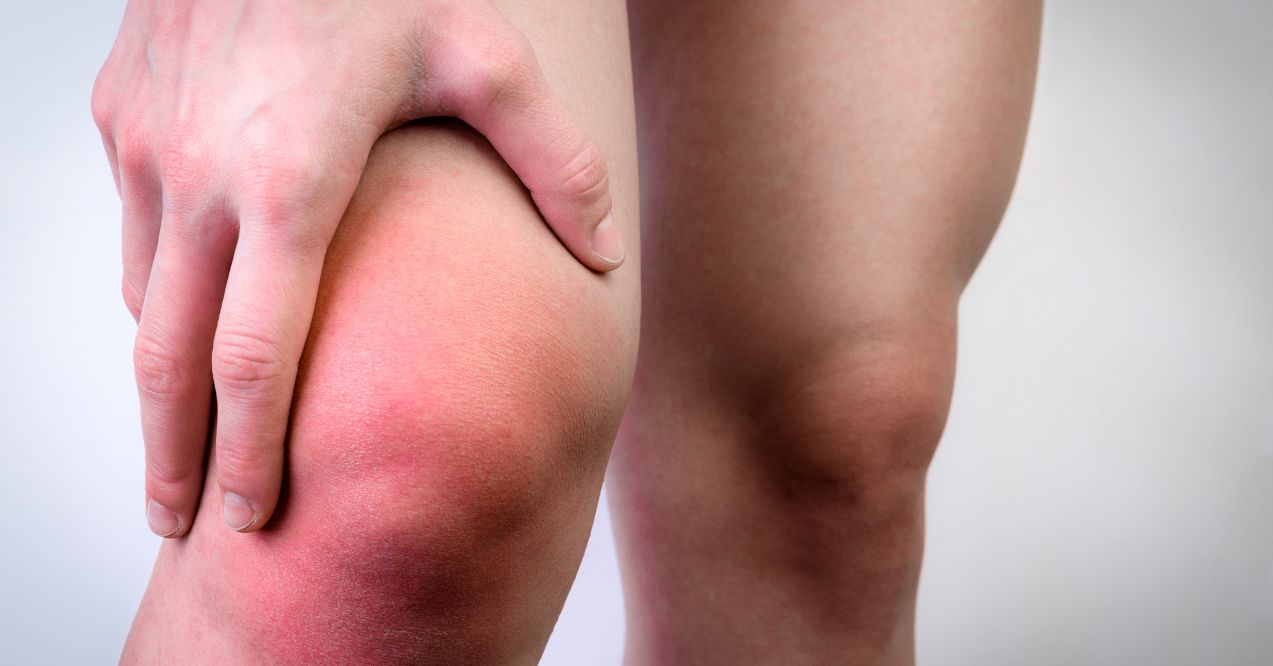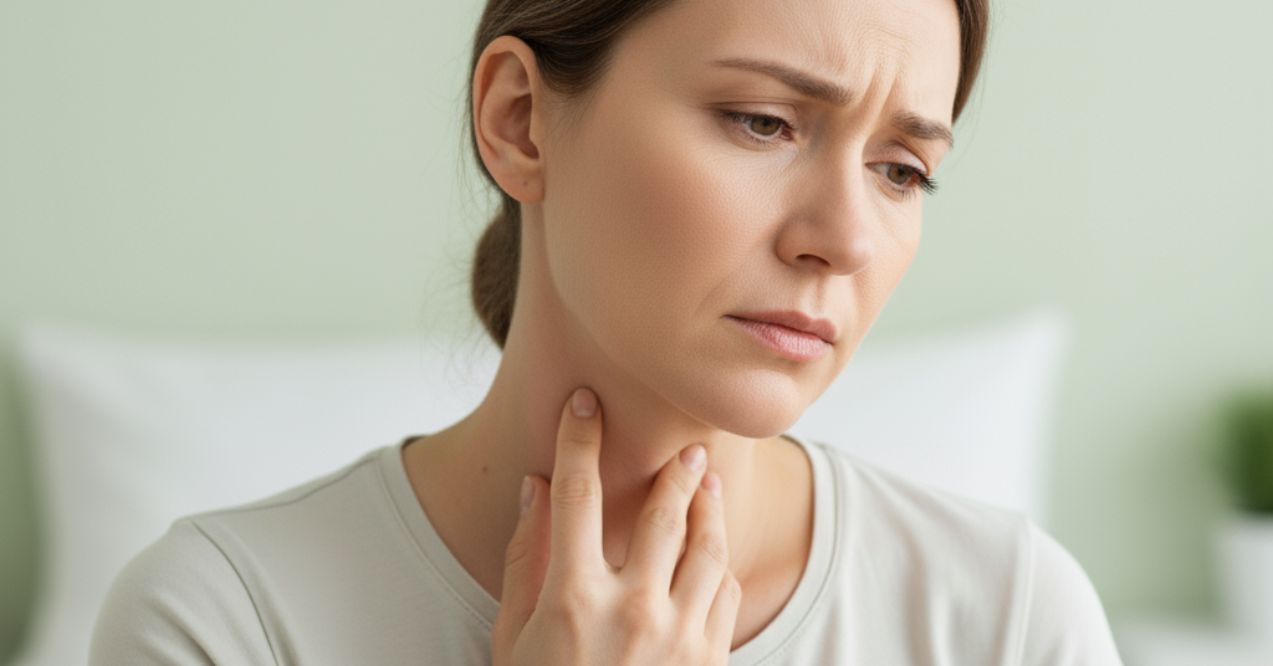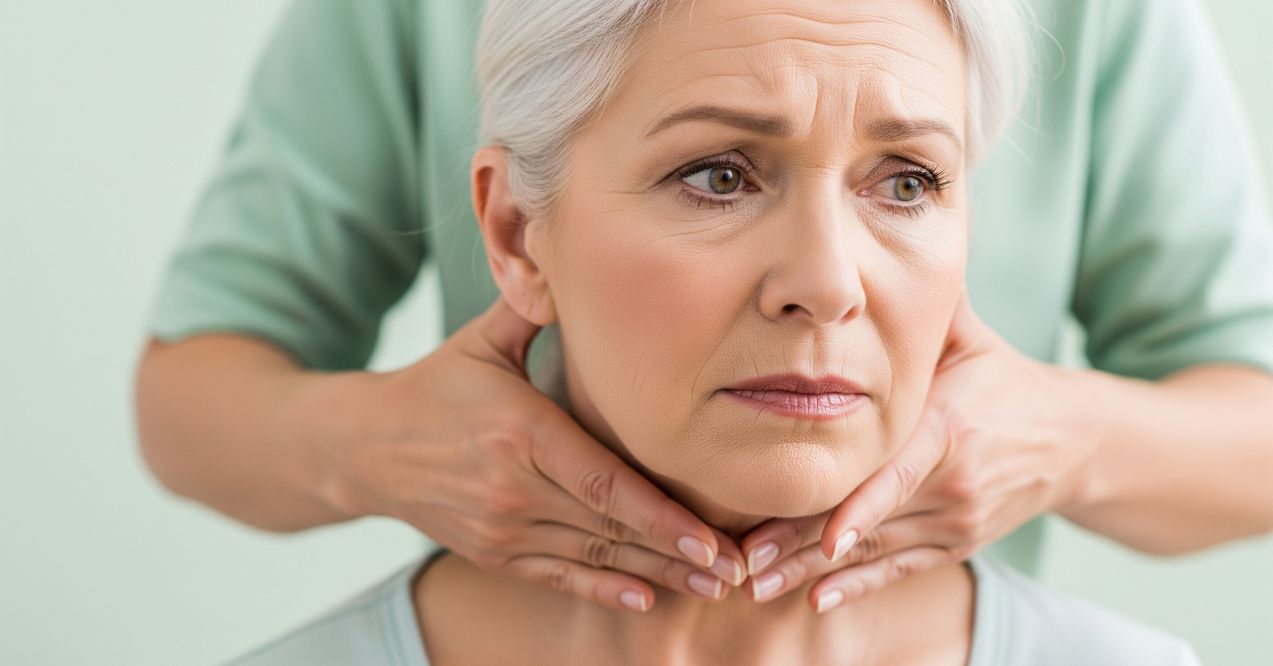Lymph Nodes Behind Your Knee: Why Do They Matter?
Medically reviewed by our experts


The body’s defense system works around the clock to protect you from harmful invaders. At the heart of this protection are lymph nodes – small bean-shaped structures that filter out unwanted substances. While most people know about lymph nodes in the neck or armpits, fewer are aware of the important lymph nodes behind knee.
These small but mighty structures play a vital role in keeping your legs healthy and supporting your body’s immune response. As we age, paying attention to these often-overlooked parts of our anatomy becomes increasingly important.
What Are the Lymph Nodes Behind the Knee?
These small structures sit in the popliteal fossa – the diamond-shaped hollow area at the back of your knee. Typically measuring just a few millimeters in size, most people have between 6-7 popliteal lymph nodes in each knee.
These lymph nodes behind knee areas serve as filtering stations for lymphatic fluid moving up from your lower leg and foot. They trap and filter out potentially harmful substances like bacteria, viruses, and waste materials before the fluid continues its journey toward the heart.
The popliteal lymph nodes are part of a larger network that includes the inguinal lymph nodes in the groin area. Together, they form a critical defense mechanism for your lower extremities, helping to fight off infections and remove cellular waste. When functioning properly, these knee lymph nodes work silently – you may never even notice their presence.
What Can Cause Lymph Node Swelling Behind the Knee?
Lymph node swelling behind knee areas often occurs when these tiny structures are working overtime. The swelling happens because the nodes fill with white blood cells fighting an infection or responding to an injury.
Several factors may cause your popliteal lymph nodes to swell:
- Infections – Bacterial, viral, or fungal infections in the foot or leg can trigger swelling in the knee lymph nodes as they work to filter out pathogens
- Injuries – Cuts, scrapes, or other wounds on the leg or foot may cause temporary lymph node enlargement
- Inflammatory conditions – Conditions like rheumatoid arthritis may trigger lymphatic responses
- Poor circulation – Issues with blood flow can affect lymphatic drainage and sometimes cause swelling in just one leg. This connects closely to the question many people ask: “Why is only my left leg swelling?”
- Allergic reactions – Some people experience lymph node swelling as part of an allergic response
In some cases allergies cause swollen lymph nodes. While allergies typically affect lymph nodes in the neck or face, severe allergic reactions can sometimes impact nodes in other parts of the body, including behind the knee. When the lymph nodes behind your knee are under stress, your entire lymphatic system may need extra support.
Natural supplements for lymphatic drainage like Lymph Go may help maintain healthy lymphatic function. The Lymph Go ingredients list includes botanicals traditionally used to support lymphatic drainage and circulation, helping your body manage fluid balance and waste removal more efficiently.

Adding this supplement to your daily routine may assist your body’s natural detoxification processes and potentially contribute to overall lymphatic health.
Symptoms of Swollen Popliteal Lymph Nodes
When lymph nodes behind the knee become swollen, you may notice several signs. Recognizing these symptoms early can help you address potential issues before they worsen.
Pain or Tenderness
Swollen popliteal lymph nodes often become tender to the touch. You might notice discomfort when:
- Pressing on the back of your knee
- Bending your knee fully
- Kneeling or squatting
- Walking up or down stairs
This pain may range from mild to severe depending on the cause and extent of the swelling.
Swelling or a Lump Behind the Knee
The most obvious sign of lymph node swelling behind knee areas is a visible or palpable lump. These swellings typically:
- Feel soft and movable under the skin
- Range from pea-sized to larger, depending on the cause
- May appear gradually over days or suddenly
- Can occur on one or both sides
If you notice a new lump behind your knee that persists for more than a week, it’s worth mentioning to a healthcare provider.
Limited Range of Motion
As lymph nodes swell, they may affect your ability to move your knee normally. You might experience:
- Stiffness when trying to fully bend or straighten the knee
- A pulling sensation during movement
- Discomfort that worsens with activity
- Reduced flexibility that affects daily activities
These limitations may be more noticeable after periods of inactivity, such as when first getting up in the morning. In some cases, tension in the back of the knee can also radiate upward, contributing to knee and hip pain. This can make walking, climbing stairs, or maintaining an active lifestyle more challenging.
For individuals already managing chronic joint issues, this discomfort may feel similar to flare-ups after certain procedures. If you’ve undergone treatments such as injections, you might find it useful to explore guides like “What to Do Next If Facet Joint Injections Don’t Work?” to better understand long-term options.
Sensation of Heaviness or Tightness
Swollen lymph nodes can create pressure in the back of the knee, leading to:
- A feeling of fullness or congestion
- Discomfort that worsens throughout the day
- Pressure that may extend down the calf
- A sense that something is “stuck” behind the knee
This sensation often improves with elevation and rest but returns with prolonged standing or activity.
Warmth or Redness Around the Knee
In cases where infection is present, the area around swollen lymph nodes may:
- Feel warmer than surrounding tissue
- Appear reddened or flushed
- Feel hot to the touch
- Show visible inflammation
These signs often indicate your body is actively fighting an infection and may require prompt medical attention.
How Are Swollen Lymph Nodes Behind the Knee Diagnosed?
If you’re experiencing symptoms related to the lymph nodes behind your knee, proper diagnosis is important. Healthcare providers use several methods to identify the cause of swelling and determine appropriate treatment.
The diagnostic process typically begins with a thorough physical examination. Your provider will:
- Feel the area behind your knee to assess size and tenderness of nodes
- Check for other swollen lymph nodes in your body
- Examine your legs and feet for signs of injury or infection
- Test your knee’s range of motion
- Ask about your symptoms and health history
Based on the physical exam, your provider may order additional tests. These might include:
- Blood tests to look for signs of infection or inflammation
- Ultrasound imaging to visualize the lymph nodes and surrounding tissues
- MRI scans for more detailed images if needed
- In rare cases, a biopsy to examine cells from the lymph node
Are there lymph nodes behind the knee that could indicate more serious conditions? Yes, though uncommon, persistent swelling without clear cause may require more extensive testing to rule out rare conditions.
Maintaining Healthy Lymph Nodes
Your lymphatic system doesn’t have a pump like your heart, so it relies on your body’s movements to keep fluids flowing. Taking care of your lymph nodes behind the knee is part of overall health maintenance.
Here are some simple practices that may support your lymphatic health:
- Stay hydrated – Drink plenty of water throughout the day to keep lymphatic fluid moving properly.
- Keep moving – Regular gentle exercise helps promote lymphatic flow. Walking, swimming, and cycling are excellent options.
- Try lymphatic massage – Gentle self-massage around the knee can help stimulate flow. Work in upward motions toward the heart.
- Manage inflammation – Reducing overall body inflammation may benefit lymphatic health. Limiting worst foods for lymphatic system such as highly processed items, excessive sugar, and artificial additives may help.
- Consider compression – If you have circulation issues, properly fitted compression stockings might help with lymphatic drainage.
These simple practices can be incorporated into daily routines to support not just the lymph nodes behind your knee, but your entire lymphatic system.
When to Seek Medical Attention
While some swelling in lymph nodes behind the knee may resolve on its own, certain signs warrant prompt medical attention.
Contact your healthcare provider if you notice:
- A lump behind your knee that continues to grow larger
- Swelling that doesn’t improve after 2-3 weeks
- Severe pain that limits your daily activities
- Redness, warmth, and tenderness that worsen rapidly
- Fever accompanying your knee symptoms
- Unexplained weight loss or night sweats
These symptoms may signal more serious conditions requiring professional evaluation and treatment. Don’t delay seeking care if you experience these warning signs, especially if the swelling appears suddenly or is accompanied by other concerning symptoms.
Trust your instincts—if something feels wrong, it’s always better to have it checked by a healthcare professional. Early intervention often leads to better outcomes.
Conclusion
The lymph nodes behind knee play a crucial role in your body’s immune defense and waste removal systems. These small but mighty structures filter lymphatic fluid from your lower extremities, trapping harmful substances before they can spread.
When these nodes become swollen, they’re often signaling that something needs attention. Whether it’s fighting off an infection, responding to an injury, or dealing with inflammation, your popliteal lymph nodes are valuable indicators of your overall health.
Gentle massage moving upward toward the heart, regular walking, staying well-hydrated, and elevating your legs may help improve drainage of knee lymph nodes. Avoid sitting for extended periods.
Yes. Regular movement, proper hydration, a balanced diet, and maintaining healthy weight all support proper lymphatic function. Prolonged sitting and inflammatory foods may negatively impact lymph node health.
Often yes. If caused by minor infections or injuries, swelling typically resolves within 2-3 weeks as your body handles the underlying issue. Persistent swelling requires medical evaluation.
Yes, there are typically 6-7 popliteal lymph nodes behind each knee. These nodes filter lymphatic fluid from the lower leg and foot before it continues toward the heart.
FAQ
References



